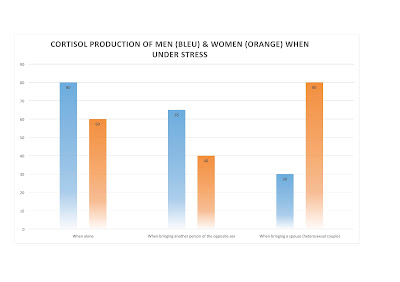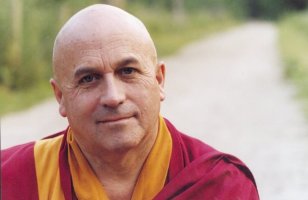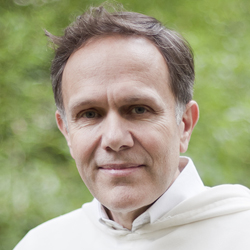 |
| Mike riding 16 year old Dusty |
Mike Bridges is an internationally renown
California-style Vaquero horseman-stockman who has made a living for over 60
years on the back of a horse. His deep understanding of biomechanics in horses
as well as humans makes him a clear and precise teacher. He is able to look at a
horse’s movement and correct the rider’s position and technique. i first met Mike
in 2009 but it is only in his latest UK clinic, Seeking Refinement, in November
2016 that i was able to ride under his instructions.
i refer to individuals like Mike as
individuals with a true level of meditation on the subject they teach. True
meditative state is very real. It includes sincere enthusiasm which leads to ever-seeking
knowledge through many years of experience establishing a solid understanding
of what works and what does not.When i asked Mike where home is for him when back in the States, is answer was simple. ‘My home is where I park my lorry.’ Mike teaches all over the world but whilst in the States he travels with his 4 horses: An 8 year old, a 4 year old, a 3 year old and a 2 year old. ‘They are all brothers’ said Mike.
The following is a synopsis of what i
learnt during this superb clinic with Mike.
A
good cow horseIn the introduction section of his book The Art of Making a California-Style Vaquero Bridle Horse, Mike writes:
‘The Vaquero-style bridle horse is one that is ridden in one hand for all work, and controlled without fingers through the reins. His primary job is to handle cattle, which includes herding, driving, cutting and sorting in a gate. In the roping of cattle, he serves as the engine to pull or as the anchor to hold. At all times, he should be a pleasure to ride.
A
bridle horse should be very light in the face and throughout the body, being
obedient to the slightest of signals from the rider. It takes 5 to 8 years to
build what Vaqueros call a ‘straight up bridle horse’. This time is necessary
to build the strength throughout the horse’s back and the rest of his body so
he is able to work in a collected frame for long periods of time.
It
is the training that makes the bridle horse, not the pedigree or type. When you
see one is like watching poetry in motion in its movements, with lightning
response to the rider’s demands.’
i asked Mike what, in his opinion, makes a
good cow horse? A horse which is receptive to the slightest movements, he
answered. The rest is good training.
Leg of the rider & its influence on the horse’s vertebra
The lower part of the leg below the rider’s knee influences the 15th , 16th, 17th & 18th thoracic vertebras whereas the upper part of the rider’s leg influences the 14th and the forward thoracic vertebras towards the neck of the horse.
The 14th thoracic vertebra is situated approximately under the middle of the saddle seat.
Weight distribution
Almost always put the weight slightly in the sense of direction you are going. For example, if trotting to the right, the weight should be slightly heavier on the right cheek. There is an exemption for canter departure. In canter departure, we put more weight in the opposite side of the departure. For example for a right canter depart, put a tad more weight on the left cheek.
The Shoulder-in
The shoulder-in is a lateral movement
working on the suppleness and balance of the horse by engaging the hind
quarters and loosening the shoulders. The horse travels on 3 tracks where the
inside hind leg and outside fore leg are on the same track. The horse has a
slight bend in the neck bending around the inside rider’s leg.
In Shoulder-in, my inside leg is asking two
things. a) create the bend of my horse about the 14th vertebrae further
& b) to place (in the case of a cow horse) or hold (in classical dressage) the
hind quarters on the track. Always aiming at lessening the cue and once the
horse travels as asked relax the leg. The outside leg drives the horse forward.
My outside rein acts as the wall. It must be still and strong but it softens once the horse is in place. My inside rein is loose creating the bend by letting the inside shoulder in.
I am sitting straight in the saddle.
In shoulder-in, once the horse is engaged, the front end lightens and so do the reins. Be aware of the balance of the horse and the evenness of the reins.
The Shoulder-out
is the reverse of the shoulder-in.
The
Leg-yield ( La session in French)
The leg-yield is a lateral movement in which the horse travels forward and sideways looking in the opposite side of travel. His spine is straight but his pole and jaw are looking away from the direction of travel. The horse’s inside fore crosses in front of the outside fore leg.
On the R rein, the horse yields to my L
leg. My R leg and R rein are open allowing the horse to move sideways. My L
rein incites a L flexion away from a R travel.The leg-yield is a lateral movement in which the horse travels forward and sideways looking in the opposite side of travel. His spine is straight but his pole and jaw are looking away from the direction of travel. The horse’s inside fore crosses in front of the outside fore leg.
The reason the leg-yield is easier than the half-pass is because it is easier for the horse to find balance whilst traveling in one direction and looking in the opposite direction.
Exercise – Shoulder-out, leg yield, turn around, small circle At the trot, shoulder-out then leg-yield then leg-yield at the walk then turn-around then leg-yield at the trot then leg-yield at the walk then small circle.
The Half-pass (L'appuye in French)
The half-pass is the same as the leg-yield
except that the horse is looking in the direction of travel.
On the R rein, my R rein establishes the R
flexion.The half-pass is a more difficult exercise for the horse than the leg-yield.
The
Trot
Straight or other ways look for the stillness
of the horse's head. The more engage the horse, the stiller the head is. Put
feel in each finger but keep the hands still.
 |
| Almost Pas De Deux with Clare riding Rebel |
Turn
& Stop
A reining horse turns & stops but a cow horse never turns & stops. A cow horse turns and go somewhere. A stop only takes place from a walk. Don’t trot and turn. Walk and turn.
How far do we want the horse to look into the turn? We want the horse to look inside the turn but not too much. Whilst turning the horse’s outside fore crosses in front of the inside fore.
Responsiveness
An analogy Mike gave regarding what he is looking in terms of responsiveness from his horses. When the phone rings, says Mike ‘I expect my horse to answer the phone not to listen to the phone ring’.
Exercise 1 – Shoulder-out, Leg yield, trot, canter
Up & down transitions looking for
lightness
One of the reason
Mike’s clinic was such a success for me is because the improvement in my riding
was immediate. The feel i got from my pony was instantly lighter and better. i would
recommend anyone who seeks improvement and refinement to ride with Mike.
A reining horse turns & stops but a cow horse never turns & stops. A cow horse turns and go somewhere. A stop only takes place from a walk. Don’t trot and turn. Walk and turn.
How far do we want the horse to look into the turn? We want the horse to look inside the turn but not too much. Whilst turning the horse’s outside fore crosses in front of the inside fore.
As a schooling tip, Mike reminded us to
work on our back-up often and regularly. First you want distance and fluid
steps and it does not need to be straight. The fluidness of the steps is very
important as that develops along with the distance it will be easy to
straighten the horse later. Do not try for speed until the horse can back straight
with balance. As the back-up improves the balance of your canter will improve
and your stops will get better!
Responsiveness
An analogy Mike gave regarding what he is looking in terms of responsiveness from his horses. When the phone rings, says Mike ‘I expect my horse to answer the phone not to listen to the phone ring’.
Exercise 1 – Shoulder-out, Leg yield, trot, canter
At the trot – K
to V , Shoulder-out – V x R, Leg yield – R to M, straight trot – L Canter at M
Exercise 2 – Shoulder-out, half-pass, trot, canter
At the trot – K
to V , Shoulder-out – V x R, Half-pass – R to M, straight trot – L Canter at M
Exercise 3 – Shoulder-out, Leg-yield or half-pass,
Shoulder-in
At the trot – K
to V, shoulder-out – V x R, Leg-yield or Half-pass – at R, shoulder-in
Exercise 4 – Mixing Shoulder-in, Bends, Walk &
Trot
Walking or
trotting on the L rein – B to M, Shoulder-in – At M create a wall with my R
rein and R leg and drive the L hind with my inside leg – Just past the corner,
I aim to be in the same shoulder-in position as I was before taking the corner
– Trot shoulder-in up to the next corner, keeping the shoulder-in positon –
Past the corner, I should be in shoulder-in again – H to E, shoulder-in.
6 strides of
canter – a few strides at the walk – 6 strides of canter – walk and so on. We
are looking for smoothness and connection. The horse is collected. This is not
a lope. We are looking for lightness in response and lightness in movement.
Once these two are achieved, a horse becomes light. Beware that the first canter
feels good but the subsequent ones feels heavy as the horse is falling on his
shoulders.
Counter-bent circle
On the L hand
circle, the horses head bends to the R – Take the outside rein to the horse’s R
shoulder so that the horse’s shoulder can move – Drive with the outside leg –
The inside leg stays neutral.
Then travel
straight, then change hand.
Back Bone Stop
This is a good stop to learn particularly for reining and cow horses. The idea is to teach the horse the stop cue with the help of the cavalleti. Once the horse recognizes the cue, the cavalleti is not necessary anymore. The aim is to have a neat and immediate stop to the cue.
Back Bone Stop
This is a good stop to learn particularly for reining and cow horses. The idea is to teach the horse the stop cue with the help of the cavalleti. Once the horse recognizes the cue, the cavalleti is not necessary anymore. The aim is to have a neat and immediate stop to the cue.
Start by trotting
or cantering your horse around going over a cavalleti for about 20 times.
A length away
from the pole, I hardened my hands without pulling on the reins, rotate my
pelvis as if I am bearing my spine in the ground. If the horse stops, let him
rest for 20 second then take him away without crossing the pole. If, however,
he does not stop on cue and crosses the pole, turn him around and rush him back
to the starting position and repeat the exercise.
Autan's 1st ride in the hackamore
If there is one horseman to ask for guidance, it is Mike. He is the expect of the hackamore. On the 3 last days of the clinic, Autan was in the hackamore. Throughout the clinic, Mike and Marci helped me a lot with my hand and finger positions as well as feeling the horse through the mecate reins. Autan responded very well despite having not ridden in the hackamore for 3 years.
If there is one horseman to ask for guidance, it is Mike. He is the expect of the hackamore. On the 3 last days of the clinic, Autan was in the hackamore. Throughout the clinic, Mike and Marci helped me a lot with my hand and finger positions as well as feeling the horse through the mecate reins. Autan responded very well despite having not ridden in the hackamore for 3 years.
 |
| Marci, Mike, cat & Autan |




































